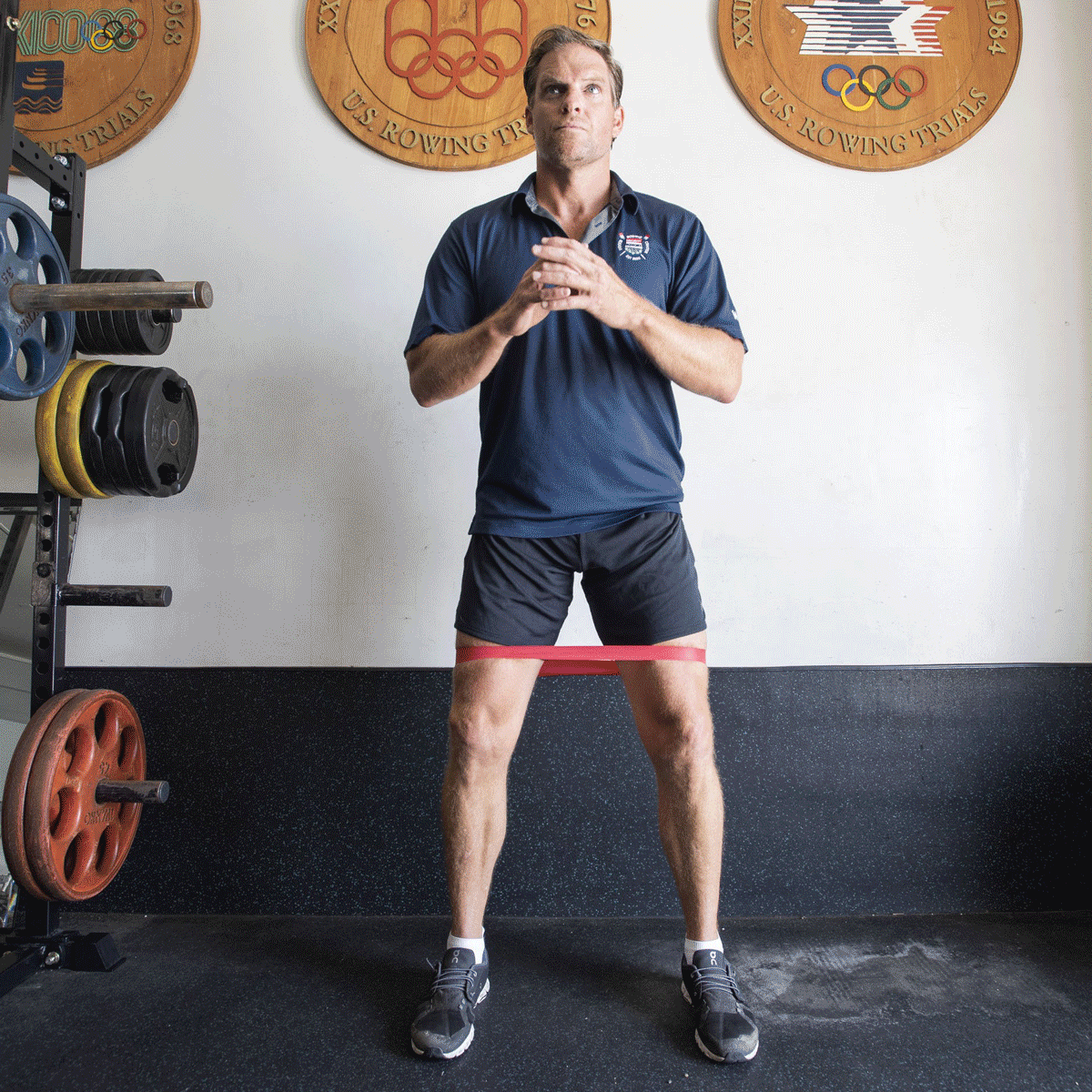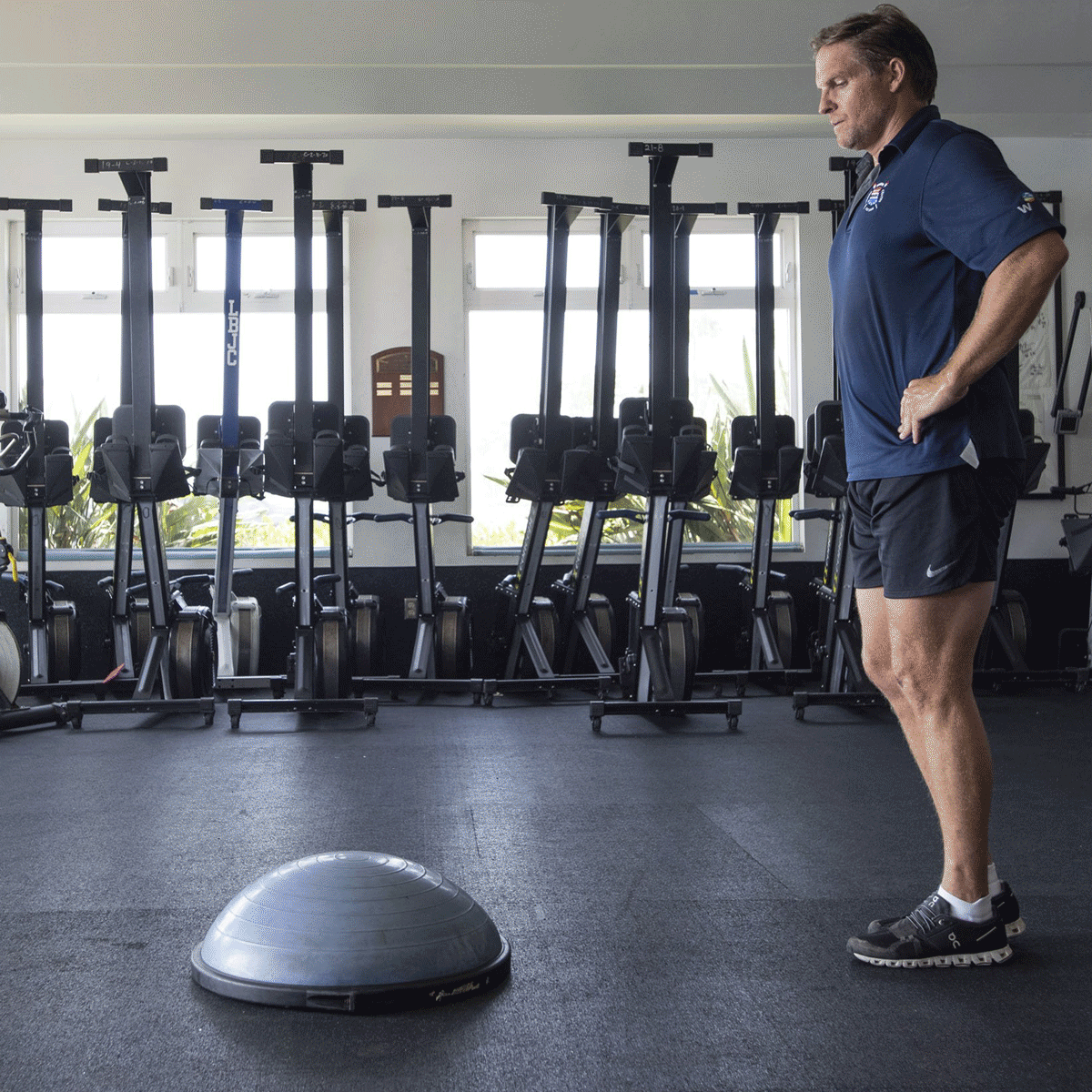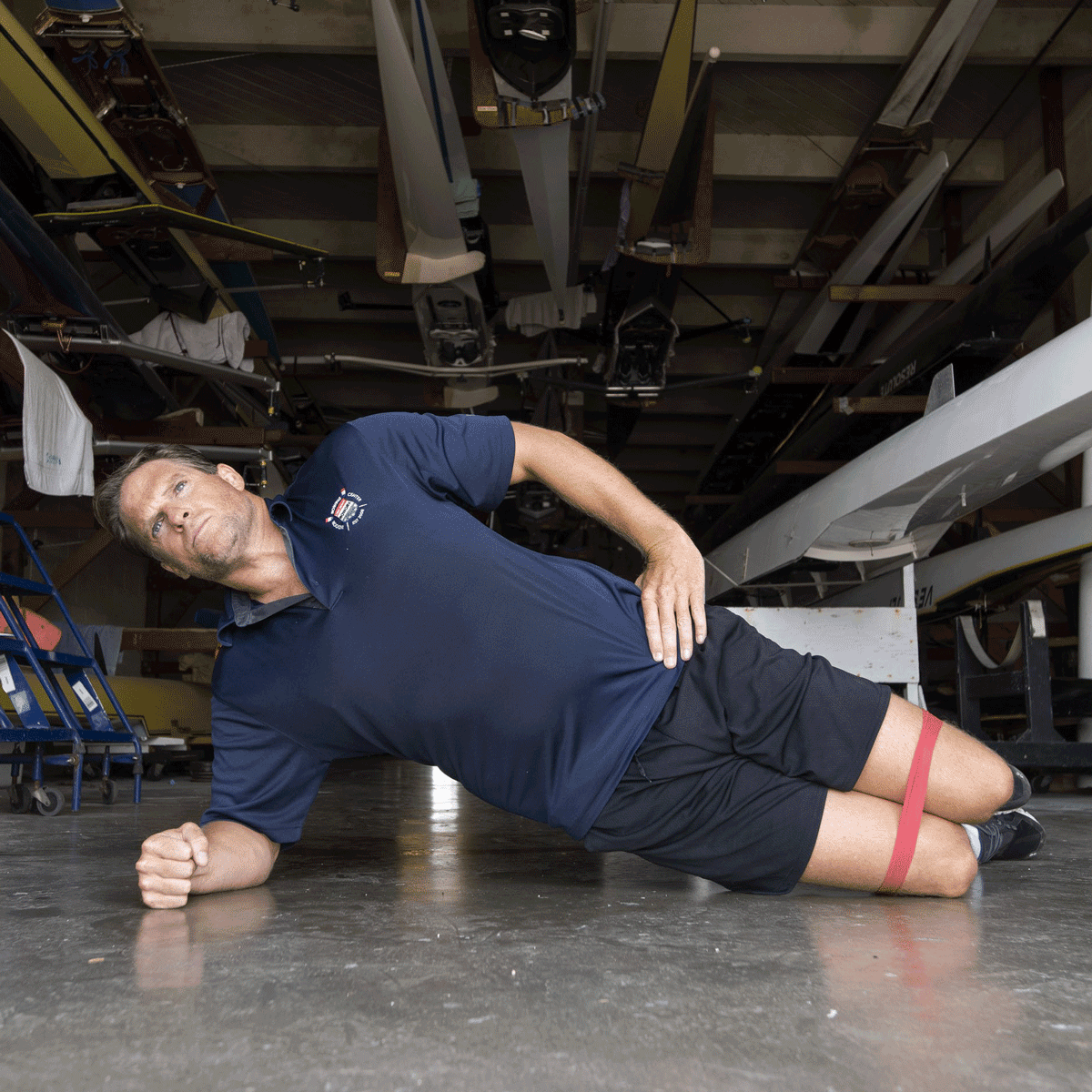Strong, powerful legs and glutes are the secret weapons of elite rowers. “A rowing workout is most closely related to a squat jump or dead lift,” says Jack Nunn, a former member of the USRowing national team and founder of Roworx Fitness in Long Beach, Calif. “Nearly 70% of the power coming from the rowing stroke is driven through the legs and back,” says Mr. Nunn, whose father, John Nunn, competed in and coached rowing in the Olympics.
The lower-body movement in the rowing stroke helps strengthen the quadriceps and hamstrings, key muscles that protect the knee joint, Mr. Nunn says. If you don’t have access to a boat or a rowing machine, he says, mimicking the lower body rowing motion on land is as simple as adding squats into your routine. “When I underwent two knee surgeries, both doctors told me to start doing standard standing squats to regain strength,” he says.
Core strength and balance also help rowers excel on the water. “We need to be able to balance a 26-foot-long boat that’s only about a foot wide while rowing backward in a straight line,” he says. His coach at the University of California, Berkeley, where Mr. Nunn rowed for four years, said rowing requires the stamina of a runner, the balance of a gymnast and the power of a Greco-Roman wrestler, all rolled into one.
To that end, Mr. Nunn likes to enhance standard exercises like the squat or lunge with resistance bands, Bosu balls and other twists, like a pillow, that challenge balance and coordination. The following exercises focus on building strength around the knee joints while also helping train balance and core stability. He suggests performing three to five sets of each with one minute of rest in between.
The Workout
Dynamic Wall Sit
Why: “Wall sits are an invaluable exercise to build overall leg strength and stability,” says Mr. Nunn. “They are a staple of sports that require leg endurance such as skiing, football, ice hockey and cycling.”
How: Stand facing away from a wall with your feet shoulder-width apart. Hold a medicine ball, dumbbell or other weighted object straight out in front of you. Lower into a squat with your shoulders and back pressing against the wall. Rotate the weight to the left trying to touch the wall. Return to center. Raise it overhead and tap the wall. Return to center. Rotate the weight to the right to touch the wall. Return to center and raise it again above your head. Repeat for 30 seconds. Build up to a two-minute hold.
Option: While performing the wall sit, slowly roll up onto your toes and hold for 15 seconds. Rock back onto your heels and hold for 15 seconds. Repeat throughout the set. “This will give you the ultimate leg and core workout,” he says.

Mr. Nunn does a dynamic wall sit.
Dynamic Squat with Resistance Band
Why: “When done properly, squats are one of the best exercises for knee health,” he says. “Squats work the quads, glutes and hamstrings. Pressing out against the resistance band will strengthen the knees.”
How: Place a resistance band just above the knees. Step your feet out until they are shoulder-width apart, toes pointing forward. Keep your back straight and raise your arms up. Squat down until your knees form a 90-degree angle. If you feel any discomfort in the knee joint don’t sit as low. Perform 15 to 30 squats while pressing out against the resistance band.
Option: If you feel your knees collapsing inward, gently place your hands on top of your thighs as a spot and don’t squat as deeply.

Mr. Nunn performs a dynamic squat with a resistance band.
Lunge Onto a Pillow
Why: “Lunges are a beginner-friendly move to strengthen the glutes, quads, hamstrings and core,” he says. Adding an unstable surface challenges single-leg balance, he says.
How: If you are at a gym, use a Bosu ball or Airex Balance Pad. At home, you can substitute a memory foam pillow. Perform a lunge and note where your front foot falls. Now place the unstable object there. Step your right foot forward onto the pillow and sink your back knee down into a lunge. Press down through the right foot to return to standing position. Keep your back straight throughout the movement. Perform 10 to 20 reps per leg.
Options: If you feel wobbly, allow your back knee to touch the floor before returning to standing position, or perform a stationary lunge and keep the front foot on the pillow rather than step forward and back.

Mr. Nunn demonstrates a lunge on a Bosu ball. At home, you can use a pillow.
Banded Side Walk
Why: This exercise helps build stability in the hips and knee joints and is a serious glute burner, Mr. Nunn says.
How: Place a resistance band just above the knees. Step your feet shoulder-width apart creating resistance on the band with your thighs. Sink into a half squat position and walk 10 to 20 steps to the right then reverse directions. Make sure your toes remain pointing forward. Don’t let your knees collapse inward, and maintain a flat back. Hands can be on your hips or clasped in front of your chest.
Banded Modified Side Plank with a Clamshell
Why: “The glutes are constantly activating during the rowing stroke,” says Mr. Nunn. This exercise increases the strength of the gluteus medius while building hip and core stability.”
How: Lie down on the floor on your right side with a resistance band placed just above your knees. Bend your knees at 90 degrees so your feet are behind you. Prop yourself up on your right elbow. Leave your right knee on the floor and raise your hips off the floor so your body forms a straight line, knees to head. Slowly, with control, raise the top left knee up while keeping your feet together then return to start. Use your hip and glutes to gently lift your leg, not your knee or quadricep. The motion should mimic a clamshell opening and closing. Perform 10 times on each side.

Mr. Nunn performs a banded modified side plank with a clamshell.
Kneeling Slide Stretch
Why: Whether you’re sitting on a rowing machine, bike or at a desk, your hip flexors are in a flexed position. When they stay in that position for a prolonged period they become tight, and pull down and forward on the pelvis, which compresses the lower back and often causes back pain, he says. This is a great exercise to stretch the groin and hip flexors.
How: Start on hands and knees with sliders or dish towels beneath your knees. Move your knees out just beyond shoulder width. As you press your hands into the floor, slide your knees back and push your hips back as if performing a modified downward dog pose. You should feel a stretch in your groin and inner quads. Contract the quads to return to the starting position. Repeat 10 to 20 reps.
SHARE YOUR THOUGHTS
What’s your favorite exercise to build knee stability? Join the conversation below.
Write to Jen Murphy at workout@wsj.com
"six" - Google News
July 31, 2021 at 05:00PM
https://ift.tt/3zZFRzF
Six Exercises to Build Knee Strength and Stability - The Wall Street Journal
"six" - Google News
https://ift.tt/3dcBbL9
https://ift.tt/2Wis8la

No comments:
Post a Comment